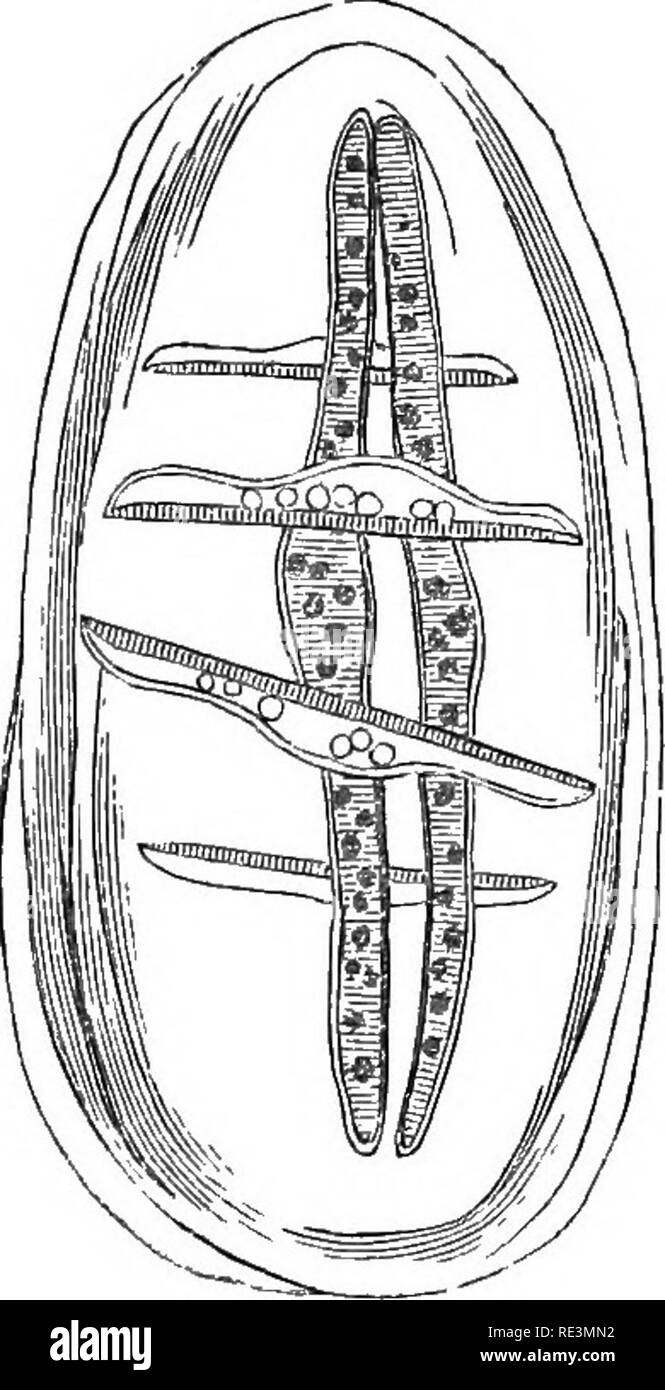. Introduction to cryptogamic botany. Cryptogams. INTRODUCTION TO CRYPTOGAMIC BOTANY. 125 stem is never developed, except where the plant has sprung from a spore. The siliceous coats of the cells are not only variously marked, but beneath these and the lining membrane there are often little channels. Along the line of suture in disciform or circular frustules, but more generally at the extremity of the valves only, when oblong, linear, or elongated, there exist perforations in the silex, which permit the sur- rounding water to have access to the surface of the iatemal cell membrane. Without so

Image details
Contributor:
The Book Worm / Alamy Stock PhotoImage ID:
RE3MN2File size:
7.2 MB (307.2 KB Compressed download)Releases:
Model - no | Property - noDo I need a release?Dimensions:
1131 x 2210 px | 19.2 x 37.4 cm | 7.5 x 14.7 inches | 150dpiMore information:
This image is a public domain image, which means either that copyright has expired in the image or the copyright holder has waived their copyright. Alamy charges you a fee for access to the high resolution copy of the image.
This image could have imperfections as it’s either historical or reportage.
. Introduction to cryptogamic botany. Cryptogams. INTRODUCTION TO CRYPTOGAMIC BOTANY. 125 stem is never developed, except where the plant has sprung from a spore. The siliceous coats of the cells are not only variously marked, but beneath these and the lining membrane there are often little channels. Along the line of suture in disciform or circular frustules, but more generally at the extremity of the valves only, when oblong, linear, or elongated, there exist perforations in the silex, which permit the sur- rounding water to have access to the surface of the iatemal cell membrane. Without some such provision, it is almost impossible that there should be any interchange between the contents of the cells and the surrounding fluid. Biatomaceos were long. Fig. 34. Epithemia gihba, Kutz. From Mr. Thwaites, in Ann. of Nat. Hist., vol 20, tab. 22.* The two original individuals liave each split up into two frustules. behoved to be animals, and this view has more especially been maintained by Ehrenberg ; but the discovery of the coupling of fronds by Mr. Thwaites, and the confirmation of the fact by * I have two or three mounted specimens of different species, and from amongst them, E. gibha, from Mr. Thwaites, oiDiatomace^ in con- jugation, confirmatory in every respect of his observations.. Please note that these images are extracted from scanned page images that may have been digitally enhanced for readability - coloration and appearance of these illustrations may not perfectly resemble the original work.. Berkeley, M. J. (Miles Joseph), 1803-1889. London, New York, H. Bailliere; [etc. , etc]